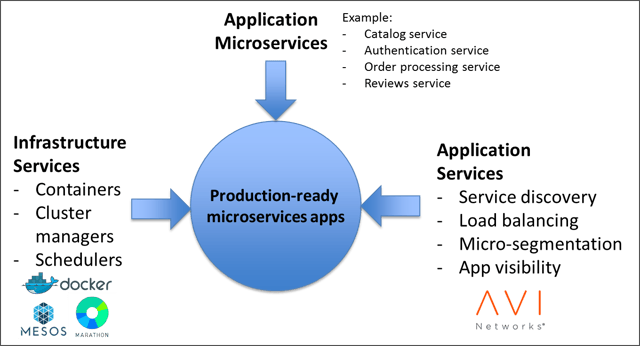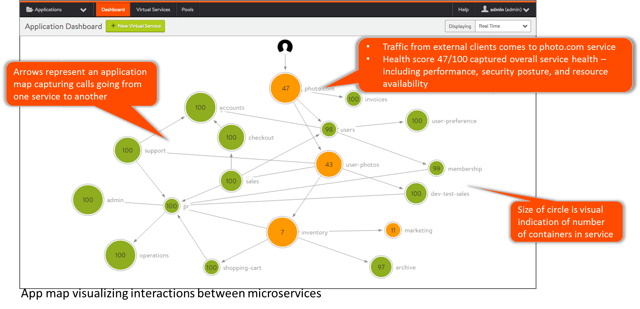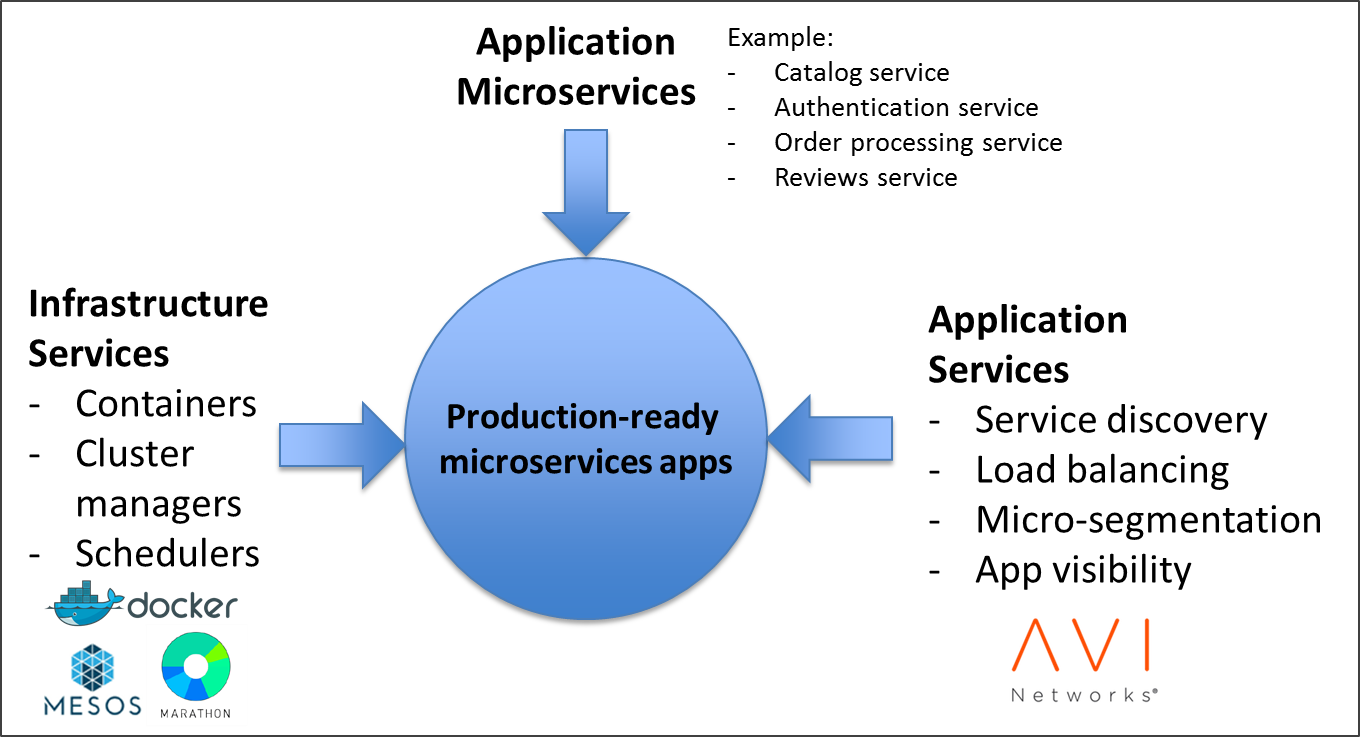Today Avi Networks announced a new solution to enable enterprises to deliver production-ready microservices applications. Microservices architecture it seems is the tech world’s answer to applications that are “too big to fail.” Business disruptions caused by application downtimes have driven enterprises to find ways to break large applications into bite-sized components that can be independently deployed and updated without causing major outages. Light-weight container based infrastructure (e.g. Docker) along with resource and cluster management solutions such as Mesos are a natural fit for microservices applications. Assembling production-ready microservices applications requires a combination of infrastructure services, the application components themselves, and a range of application services.

The Opportunity for Streamlined Application Services
Application services in such environments needs to address discovery of services, visualization of application components and their interactions, analytics to understand performance issues, and isolation and segmentation of applications by securing their East-West interactions. However, the burden of providing application services for microservices architectures typically falls on DevOps teams who have to piece together multiple point solutions or open source technologies. Legacy appliance based ADCs require manual configurations and simply don’t have the architectural flexibility to match the agility and dynamic nature of microservices applications.
Software Defined Principles to Create a Service Fabric
Avi Networks saw the opportunity to innovate in this area using software defined principles that enables enterprises to match the speed of development and deployment of microservices apps. The Avi Vantage Platform integrates with container technologies such as Mesos and Docker to enable turnkey delivery of container based applications at scale. The Avi Service Engines represent micro-load-balancers at the most basic level, but report powerful application insights and performance data as telemetry to the central Avi Controller. The Avi Service Engines are distributed throughout the cluster and are co-resident on the individual hosts that make up the Mesos cluster. Containers that reside in these hosts interact with other containers on the same host or other hosts through the Avi Service Engines adhering to centrally controlled allowlisted policies. Since all interactions flow through the Avi Service Engines, the Avi Controller can also build a real time map of the microservices application showing all of the interactions between the application components.

Application Services Go From “Macro” to “Micro”
In this way, the Avi Service Engines create a distributed services fabric that is dynamically configured using REST APIs or centrally administered from the Avi Controller. They deliver application services close to the application components that need them without the need for extraneous agents or traffic steering. The Avi Vantage architecture with separate control and data planes enables this simple but powerful notion of fully distributed load balancing (and a whole host of other services) scalable to thousands of nodes in the cluster. It is the reason that top Fortune 100 enterprises are taking the leap to develop scalable, microservices applications and using Avi Vantage to enable supporting application services.
Avi Vantage for Microservices is free for development and testing and can be downloaded here.



